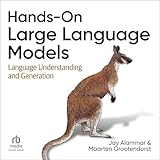

Tl;DR: AI is evolving and humans need to define their relationship with it. It was born from years of research, experimentation, and the combination of statistics, math, and computer power. Linear regression was the initial state of AI, using data and computation to understand patterns. Now, AI is more productive than the human brain, but it needs constant input of data to make decisions. ChatGPT was a major breakthrough, democratizing AI.
Disclaimer: This post has been created automatically using generative AI. Including DALL-E, Gemini, OpenAI and others. Please take its contents with a grain of salt. For feedback on how we can improve, please email us
Introduction
Artificial Intelligence (AI) has rapidly evolved over the years, fundamentally transforming industries, lifestyles, and the human experience. Much like biological evolution, AI’s development can be seen as a form of natural selection, where algorithms and models are continually refined and improved to better fit their intended functions. In this blog, we’ll delve into how AI has evolved, the pivotal moments that have shaped its trajectory, and what this means for humanity as we define our relationship with this powerful technology.
The Birth of AI
AI’s journey began decades ago, rooted in the convergence of statistics, mathematics, and computational power. The early days of AI were marked by the use of simple models like linear regression, which utilized data and computation to discern patterns. This was the foundational stage of AI, where machines started to mimic basic human tasks by recognizing and predicting trends from given data sets.
Evolution and Breakthroughs
AI’s evolution can be likened to Darwinian natural selection, where the fittest algorithms survive and adapt. As computational power increased and more sophisticated statistical methods were developed, AI began to exhibit capabilities that surpassed basic pattern recognition. Machine learning models, particularly neural networks, began to demonstrate unprecedented accuracy in tasks like image recognition and language processing.
A significant breakthrough came with the development of deep learning, which allowed AI to process vast amounts of data and uncover complex patterns with minimal human intervention. This leap transformed AI from a tool of prediction to a system capable of autonomous decision-making in certain contexts, such as self-driving cars and real-time language translation.
ChatGPT: A New Era
The launch of ChatGPT marked a significant milestone in AI’s journey. By democratizing AI, ChatGPT made advanced language processing capabilities accessible to the masses, enabling more interactive and intuitive human-computer interactions. This model, and others like it, have underscored AI’s ability to perform tasks that require understanding and generating human language, which was once thought to be a uniquely human capability.
ChatGPT’s success is a testament to AI’s natural selection process, where countless iterations and improvements have led to models that not only meet but often exceed human expectations in specific tasks. However, these advancements come with the caveat of needing vast amounts of data to make informed decisions and predictions.
Defining Our Relationship with AI
As AI continues to evolve, it becomes increasingly crucial for humanity to define its relationship with this technology. The rapid advancements have sparked debates about the role of AI in society, ethical considerations, and the potential for AI to outpace human intelligence. While AI has the power to augment human capabilities and solve complex problems, it also poses challenges that require careful navigation, such as data privacy, bias, and the need for accountability in AI-driven decisions.
The Need for Constant Input
Despite AI’s impressive capabilities, it still requires constant input of data to learn, adapt, and make decisions. This reliance on data is a double-edged sword, providing AI with the ability to continually improve while also necessitating a steady flow of information to maintain its effectiveness. As a result, the relationship between humans and AI is symbiotic; humans supply the data, and AI processes it to yield valuable insights and solutions.
The Future of AI Evolution
Looking ahead, the evolution of AI is poised to continue at an accelerated pace. With ongoing research and development, AI is likely to become even more integrated into everyday life, offering solutions that enhance efficiency and productivity. However, this evolution must be guided by thoughtful consideration of ethical implications and a clear understanding of the societal impacts of AI.
Conclusion
The evolution of AI, much like natural selection, has been marked by incremental advancements and groundbreaking breakthroughs. As we continue to explore the potential of AI, it’s essential to maintain a balance between leveraging its capabilities and addressing the ethical and societal challenges it presents. By defining our relationship with AI thoughtfully and responsibly, we can harness its power to create a future that benefits all of humanity.
Discover the full story originally published on Towards AI.
Join us on this incredible generative AI journey and be a part of the revolution. Stay tuned for updates and insights on generative AI by following us on X or LinkedIn.





